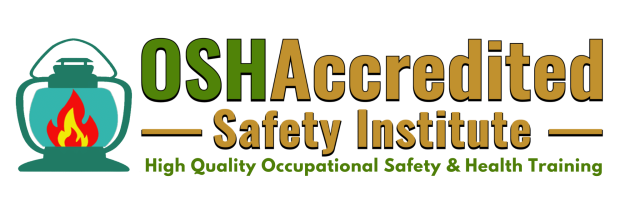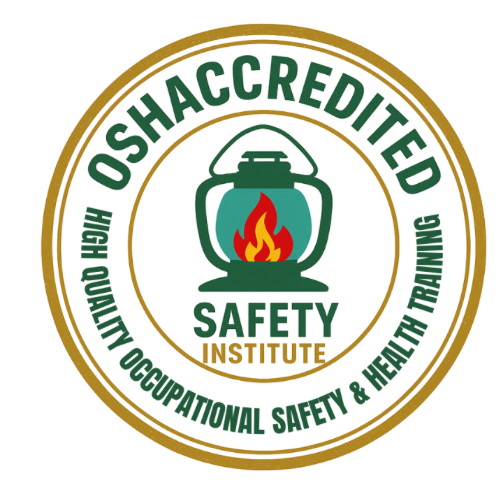The Role of OSHA Training in Understanding Heat Stress Protection and Prevention
The Role of OSHA Training in Understanding Heat Stress Protection and Prevention
As temperatures rise each summer, so do the dangers of heat-related illnesses, especially for workers in physically demanding outdoor jobs. Employers and employees must understand heat stress, its symptoms, and how to prevent serious health consequences. Fortunately, modern OSHA training, including online safety training, provides workers with tools and knowledge to recognize heat hazards and stay safe on the job.
This blog will explore what heat stress is, its various forms, how to prevent it, who is at risk, and why investing in safety courses—especially accessible online safety training—is vital for preventing heat-related illness and death.
What Is Heat Stress?
Heat stress occurs when the body cannot cool itself adequately, leading to a buildup of internal heat. This can happen when workers are exposed to high temperatures, high humidity, direct sunlight, or perform strenuous physical labor without enough breaks or hydration. When the body’s core temperature rises, it can trigger a range of heat-related conditions, some of which can be life-threatening.
OSHA (Occupational Safety and Health Administration) recognizes heat stress as a significant occupational hazard. Through various OSHA courses and safety training programs, employees are taught how to identify, manage, and prevent heat stress before it becomes a medical emergency.
CDC: Heat Stress and Workers
https://www.cdc.gov/niosh/heat-stress/about/index.html
Types of Heat Stress-Related Illnesses
Understanding the different types of heat-related conditions is critical. Each condition varies in severity and requires specific first aid or medical intervention.
- Heat Stroke
Heat stroke is the most severe heat-related illness. It occurs when the body’s temperature rises above 104°F (40°C) and it can no longer regulate itself.
Symptoms include:
- Confusion or altered mental state
- Seizures
- Loss of consciousness
- Hot, dry skin (or profuse sweating in some cases)
- High body temperature
Heat stroke is a medical emergency. Without immediate cooling and treatment, it can result in death or permanent disability. Workers learn how to respond to this condition through OSHA training courses and online safety training modules on first aid and emergency response.
- Heat Exhaustion
This condition is less severe than heat stroke but still dangerous.
Symptoms include:
- Heavy sweating
- Weaknesses
- Dizziness
- Nausea or vomiting
- Muscle cramps
- Headache
- Pale, clammy skin
Workers should be moved to a cooler area, provided with water, and allowed to rest. Without intervention, heat exhaustion can progress to heat stroke. Many OSHA safety courses teach practical prevention strategies to combat this.
- Rhabdomyolysis
This lesser known but serious condition occurs when extreme heat and physical exertion cause muscle breakdown. The damaged muscle tissue releases proteins into the bloodstream that can damage the kidneys.
Symptoms include:
- Muscle pain or swelling
- Weaknesses
- Dark-colored urine
Online safety training can be especially useful in raising awareness about conditions like rhabdomyolysis, which might not be widely recognized by all workers.
- Heat Syncope
Heat syncope is a fainting episode or dizziness that occurs with prolonged standing or sudden rising from a sitting or lying position, especially in hot environments.
Symptoms include:
- Fainting
- Dizziness
- Light-headedness
Encouraging movement, hydration, and allowing employees to acclimate to hot environments are key preventative measures taught in OSHA training.
- Heat Cramps
Painful muscle cramps—typically in the abdomen, arms, or legs—can result from electrolyte imbalances caused by heavy sweating during intense activity.
Symptoms include:
- Painful, involuntary muscle spasms
- Sweating
- Fatigue
Providing electrolyte-rich drinks and rest breaks is emphasized in safety training courses.
- Heat Rash
Also known as “prickly heat,” this is a skin irritation caused by excessive sweating.
Symptoms include:
- Red clusters of small blisters or pimples
- Itchy or prickly sensation
- Most common in areas where clothing causes friction
While heat rash is not usually dangerous, it can be uncomfortable and lead to infection if untreated. Teaching proper hygiene and breathable clothing choices is part of many OSHA courses.
OSHA: Working in Outdoor and Indoor Heat Environments
https://www.osha.gov/heat-exposure
Prevention: How to Protect Workers from Heat Stress
Preventing heat-related illnesses is possible when employers and workers take the right precautions. OSHA emphasizes the Water. Rest. Shade. approach.
Key prevention steps:
- Hydration: Drink water every 15-20 minutes, even if not thirsty.
- Rest breaks: Schedule frequent breaks in shaded or air-conditioned areas.
- Clothing: Wear lightweight, light-colored, breathable clothing.
- Acclimatization: Gradually increase workloads for new or returning workers.
- Monitoring: Observe coworkers for symptoms of heat stress.
- Scheduling: Shift strenuous tasks to cooler parts of the day when possible.
These practices are reinforced in OSHAccredited Safety Instituteheat stresssafety course that focuses on environmental hazards and health management in the workplace.
Recognizing Symptoms Early Saves Lives
Early recognition is key to preventing progression to severe illness. Supervisors and workers should be trained to look for early warning signs—like confusion, nausea, heavy sweating, or muscle cramps—and know how to respond.
Online safety training is a powerful tool for educating large teams efficiently and consistently. Interactive modules and scenario-based learning in Online safety and health training can make a lasting impact.
Who Is Most at Risk?
Certain industries and individuals are more vulnerable to heat stress than others. Safety training must be targeted at these high-risk groups:
- Construction Workers
Outdoor construction workers often work in direct sunlight, on rooftops, or in enclosed spaces with poor ventilation. Their physically demanding tasks increase internal body heat.
- Agricultural Workers
Farmworkers often have long hours in direct sun with limited access to shade and water. Online safety training is particularly useful in reaching this often-remote workforce.
- Landscapers and Groundskeepers
These workers are outdoors for most of the day and often wear heavy protective gear, increasing their risk.
Other vulnerable populations include:
- Older adults
- New employees not yet acclimated to heat
- Workers with preexisting health conditions
- Temporary workers unfamiliar with the hazards
Safety courses tailored to these roles help employers reduce liability and keep workers safe.
World Health Organization: Heat and health
https://www.who.int/news-room/fact-sheets/detail/climate-change-heat-and-health
The University of Iowa: Environmental Health and Safety
https://ehs.research.uiowa.edu/occupational/heat-stress
Why OSHA Training and Online Safety Courses Matter
Investing in OSHA-authorized safety training is one of the most effective ways to prevent workplace injuries, including heat stress. Employers who provide safety training not only comply with regulations but also demonstrate care for their employees’ well-being.
Benefits of online safety training:
- Accessibility: Workers can complete training on their own schedule from anywhere.
- Consistency: Everyone receives the same quality content, ensuring compliance.
- Engagement: Interactive scenarios help workers retain information.
- Customization:Safety courses can be tailored to specific industries or job roles.
Safety courses focused on heat illness prevention, first aid, and hazard recognition are essential components of a strong health and safety program.
Conclusion: Prioritize Heat Stress Prevention Year-Round
As climate change drives more extreme heat events, heat stress prevention must become a year-round priority. From heat rash to life-threatening heat stroke, all conditions are preventable with the right training, monitoring, and protective measures.
Employers must prioritize worker safety by implementing prevention strategies, recognizing symptoms early, and investing in comprehensive OSHA training and online safety trainingprograms. Workers, in turn, must stay alert to the signs of heat-related illness in themselves and their coworkers.
Whether you’re in construction, agriculture, landscaping, or another outdoor industry, online safety courses can help save lives—and ensure your workplace remains compliant, productive, and safe.
If your organization is looking to improve its heat stress prevention program, consider enrolling your team in OSHAccredited safety Institute heat stress courses today. A few hours of online safety training can make the difference between life and death on the job site.










